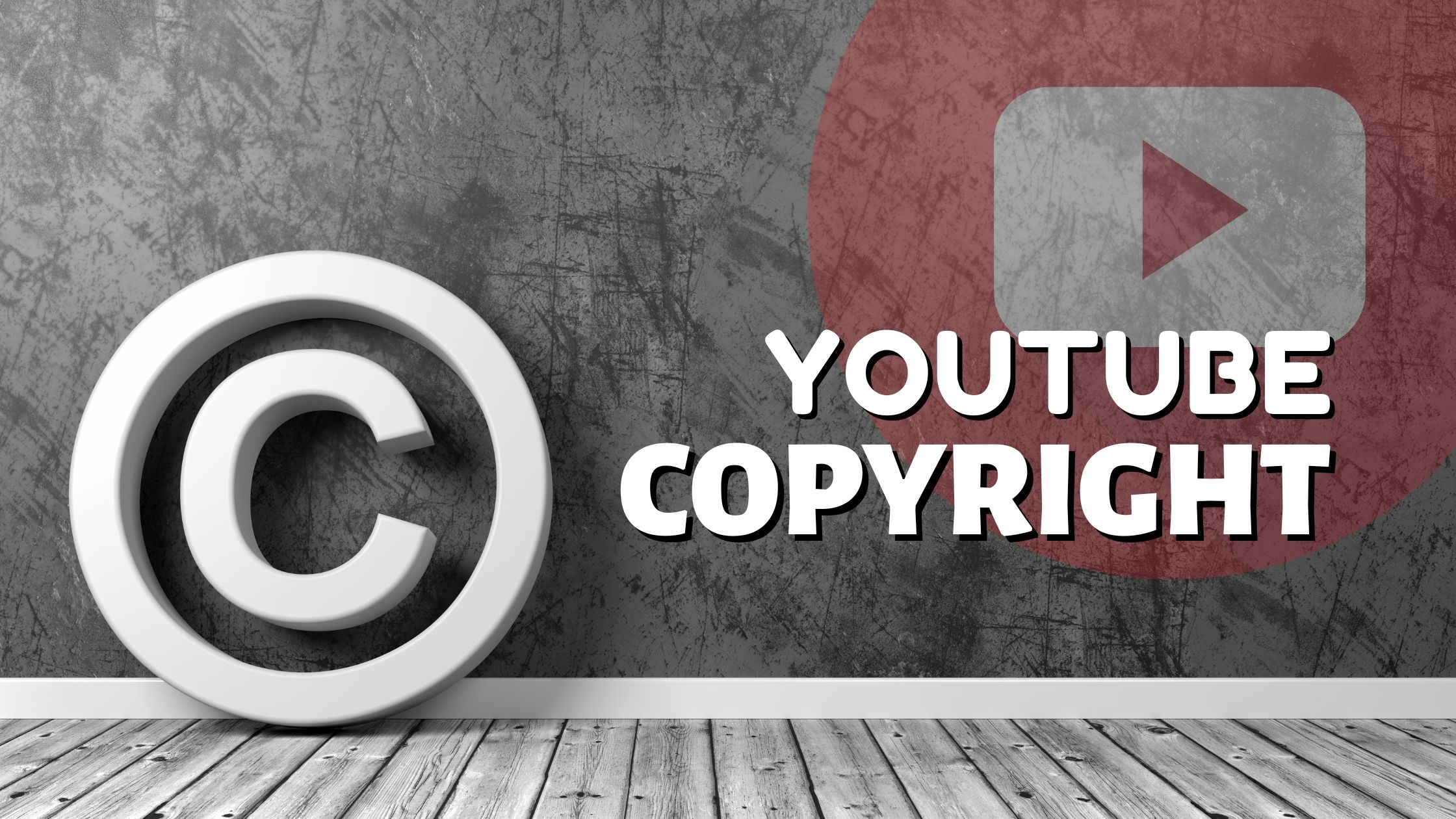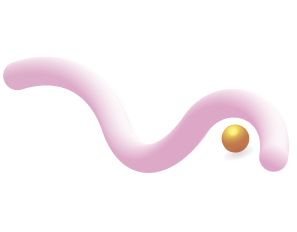
If you have been using YouTube for a considerable amount of time you must have heard of the terms copyright strike and copyright claim. Many YouTubers mention these terms in their videos, generally in a negative light. That’s because these terms can affect their videos and channel growth. But YouTube has incorporated Copyright Claims and Strikes for the benefit of the creators. If you are looking to start creating content on YouTube or you just have some general curiosity about these terms then this post is for you. We will be discussing Copyright Claim vs Copyright Strike. Though these two terms sound similar, there are some differences between them and we will be looking at that here. But before that let’s understand what is copyright.
What is Copyright?
Copyright is a type of intellectual property. It is meant to protect your original works of authorship as soon as you fix the work in any expression of tangible form. Examples can include books, musical compositions, computer programs, movies, sound recordings, photographs etc. Copyright helps ensure that your intellectual property is attributed to you and that no one is using it as their own without proper permission.
One thing to keep in mind is that Copyright is not going to protect something like ideas, methods, concepts, principles etc. It needs to be an expression that fixes the work of the author in a permanent medium. This means that the fixed work is sufficiently permanent enough that it can be perceived, reproduced, and communicated. Now, let’s look at copyright claims first and then we will check out what copyright strikes so that we understand copyright claim vs copyright strike.
Who are Copyright Owners?
Copyright Owners are individuals or entities that own copyrighted content. Many big media corporations own the copyrights to movies, musical compositions, audio etc. That’s the reason you cannot upload the entire Avengers movie on YouTube. Well, you don’t even have to upload the entire movie. Even uploading clips can flag the video.
The same goes for audio. Media corporations that work with record labels often own the rights to the rendition of songs. That’s why you cannot upload Drake’s entire album on your channel. Copyright owners can be individuals as well. It can be musicians and other content creators on YouTube. Let’s say you work hard on creating a video on YouTube and I just re-uploaded it on my channel. The reason I cannot do that is that you are the copyright owner of that video or content.
Copyright Claims
A copyright claim occurs when a person asserts that their original work or creation has been used by someone else without proper permission. In the world of YouTube, a copyright claim is often known as a content-id claim. YouTube has a powerful digital system that does most of the heavy lifting when it comes to copyright claims. On YouTube, copyright claims mainly deal with videos and sounds.
So, if someone is using a clip that they don’t own or a sound that is not their own then a copyright claim can happen and the video can be flagged by the system. The digital rights management tool of YouTube looks at each and every video uploaded on the platform. It scans a video and checks to see if any video clip, image or audio has been used without any express permission of the copyright owner. If the tool finds that the video has copyrighted material without permission then it flags the video and notifies the rights holder.
What Happens When Your Video Gets Flagged for a Copyright Claim?
When your video gets flagged for copyright claim the system will notify the owner of the video about their content being used without any express permission. The copyright owner has been notified they can do one of three things
- They can take down the video i.e the video will be blocked from being viewed on YouTube.
- They can collect the ad revenue generated by the video and funnel it to their ad account. If the video is not monetized they can monetize the video and collect the ad revenue. In this case, the video will still be available on YouTube but the uploader won’t make any money.
- They can choose to just monitor the performance of the video by tracking its stats. This disables the monetization of the video.
- They can choose to do nothing. This scenario can happen but it is not very likely to occur.
Once there’s a copyright claim on your video you have the right to dispute the claim. Once you have gone ahead with it, the responsibility falls on the copyright owner to give a response to your appeal. They will have a month (30 days) to respond to the appeal. If they don’t then the copyright claim is released. If they respond by releasing the claim then your video is greenlit. But the owner might choose to respond with a video takedown or a delayed takedown. In the case of the latter, you will have a week to retract your appeal or risk losing the video.
What’s the Impact of a Copyright Claim?
If you are wondering about copyright claim vs copyright strike then one of the differences lies in the impact. In this section, we will briefly look at the impact that a copyright claim can have. Copyright claims don’t affect the channels that much. It works on a video-to-video basis. Your channel does not get a copyright claim rather your video does.
You can lose the rights to the video and the owner can choose to monetize the video by placing ads and earning revenue from it or choose to take down the video. You can still upload videos to your channel and monetize your other content as long as they don’t have any copyright claims. But beware that if you have more than 50 copyright claims it will lead to a copyright strike which is a nice segue to the next section.
What is a Copyright Strike?
While a Copyright Claim is a gentler approach to asserting rights to one’s intellectual property a copyright strike on YouTube is a severe one. When you receive a copyright strike on your video that means the entity or individual who owns the right to the content has manually issued a strike to legally take down your video from YouTube. There is no automated process that lets right owners assert copyright strikes to videos. They have to manually do it. Your video will no longer be available on YouTube after a copyright strike. It will affect your channel adversely. So, it is in your best interest to avoid this scenario altogether.
The idea is simple, even though the effect of it can be devastating to the offender. If a rights owner finds that a video is using their copyright content like music, video or audio without any express permission they can issue a strike on that video. There is a process on YouTube that the rights owner has to follow to issue a copyright strike.
How Do Rights Owners Issue Copyright Strike?
If a rights owner sees that their content like video, audio or image is being used without any express permission they can issue a copyright strike via the DMCA Takedown Request process. Of course, it is not as easy as just pointing and clicking. The owner has to provide all the relevant information necessary to support their claim. Here are some of the details that are necessary to provide if an owner decides to file a DMCA Takedown Request.
- The owner’s contact information has to be provided while filing the request.
- A detailed and accurate description of the copyrighted material that the owner is looking to protect.
- The owner also has to agree to a sworn statement of good faith belief which dictates that the content has been used without any permission of sorts.
YouTube will take a look at the request and if things look right they will issue a copyright strike and take down the video. The uploader of the video will be notified of the strike and they have the right to file a counter-notice. If you feel that the strike is correct then you can choose to let the strike be.
What’s The Impact of A Copyright Strike?
Copyright strikes are no joke. They are the nightmares of content creators on YouTube. You don’t want to be a repeat offender as you only get three chances at this. If your channel gets three successive copyright strikes before the expiry of either then your channel will be terminated. Worse yet, you will not be allowed to create another channel on YouTube again.
That’s the biggest difference between a copyright strike vs claim. The impact of the former is way severe. You have to ensure that the content you are using is not copyrighted material. If it is copyrighted material ensure that you either have the right permission or you are using it in such a light as to attract the owner to strike down your video.
Once you have a copyright strike on your channel you won’t be able to stream anymore nor will you be able to monetize your videos. You have to wait for 3 months for a strike to expire. Another difference between a copyright claim vs copyright strike is that the owner might still pursue a legal course of action even after issuing a strike. So, try your best not to attract any strikes.
Conclusion:
So, that was a short post about copyright strike vs claim on YouTube. We hope you have a basic idea about these two terms. You can go through YouTube’s copyright policy to get a more detailed overview of the terms. To be safe, try to stick with creating original content. If you are using other content like clips or sound, we suggest you do enough work on the video itself so that your content is seen as transformative and that can be a good defense against claims. Try to avoid strikes entirely. Only big YouTubers or creators with a large enough following can overturn strikes.




© Upviews 2022 All Rights Reserved.

















Related Posts
How to Get Verified on YouTube in 4 Quick Steps
February 20, 2023 3 Min Read
How to Get Verified on YouTube in 4 Quick Steps The tremendous impact and popularity of YouTube are secrets for none. If you have ever accessed the internet, there are high chances you have used YouTube. As a video-sharing platform, YouTube has revolutionized the way people consume and create content. It has ...
Continue ReadingTop 9 YouTube Alternative Sites Which are Better Than YouTube
February 7, 2023 3 Min Read
Top 9 YouTube Alternative Sites Which are Better Than YouTube Music videos, movies, tutorials, instructional material, and more may all be found on YouTube. You know that YouTube offers a variety a sizable audience for video producers. Due to the fact that YouTube is a free platform for both users and ...
Continue Reading15 Best Cameras for YouTube Beginners: For Quality Content
January 30, 2023 3 Min Read
15 Best Cameras for YouTube Beginners For most people, YouTube is the go-to platform for entertainment. You can find all sorts of content on this platform. There are hundreds of thousands if not millions of creators who keep uploading new videos in different niches. Due to this YouTube pulls in hundreds ...
Continue Reading30 Best Chinese YouTubers You Should Subscribe To!
December 20, 2022 3 Min Read
30 Best Chinese YouTubers You Should Subscribe To! Indeed YouTube is everyone's go-to medium for entertainment, information, and education. Chinese YouTubers are making a great impression when it comes to content creation in the Asian region. This has fetched individuals from the entire globe much closer to each other. These top ...
Continue Reading